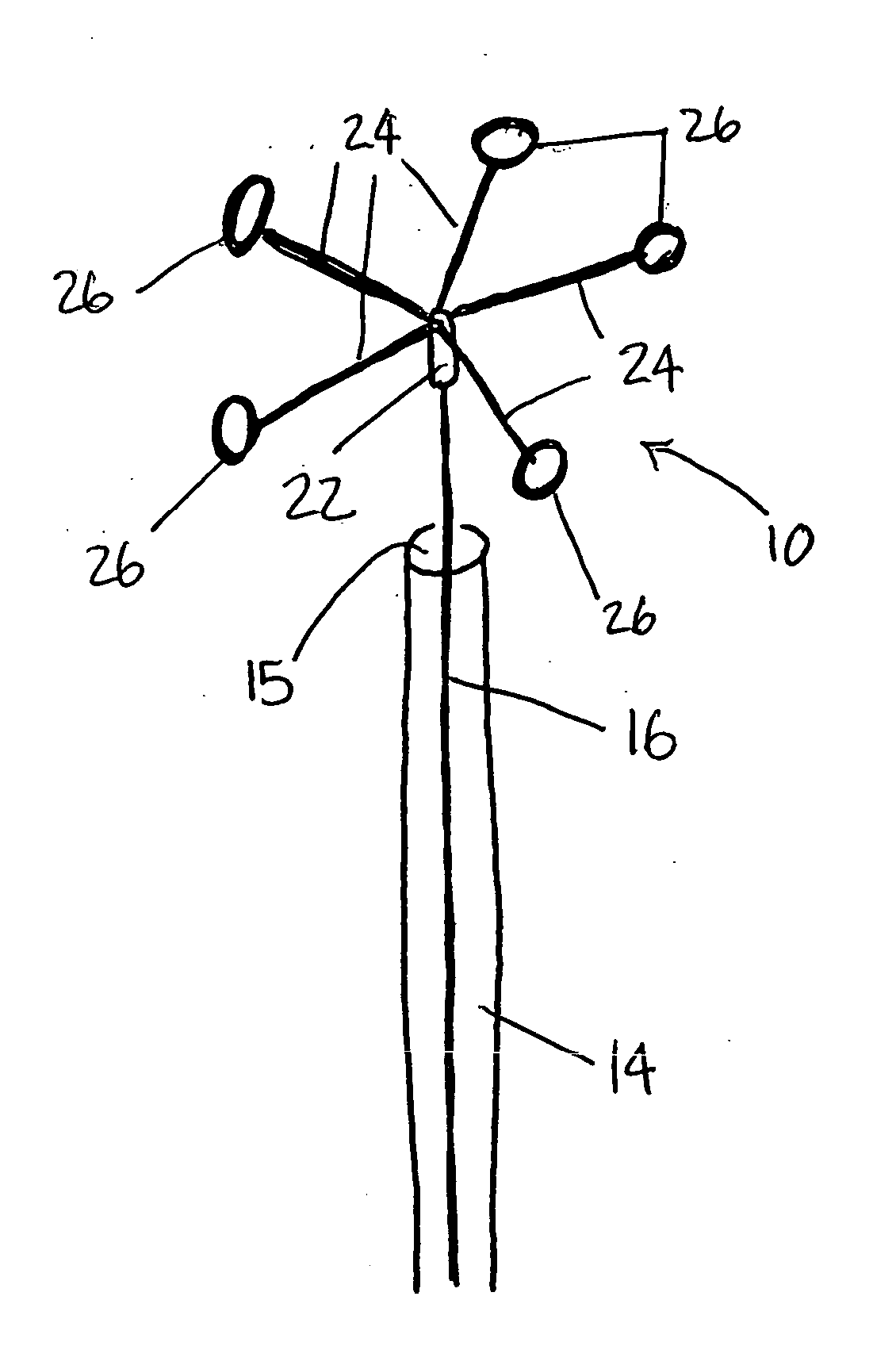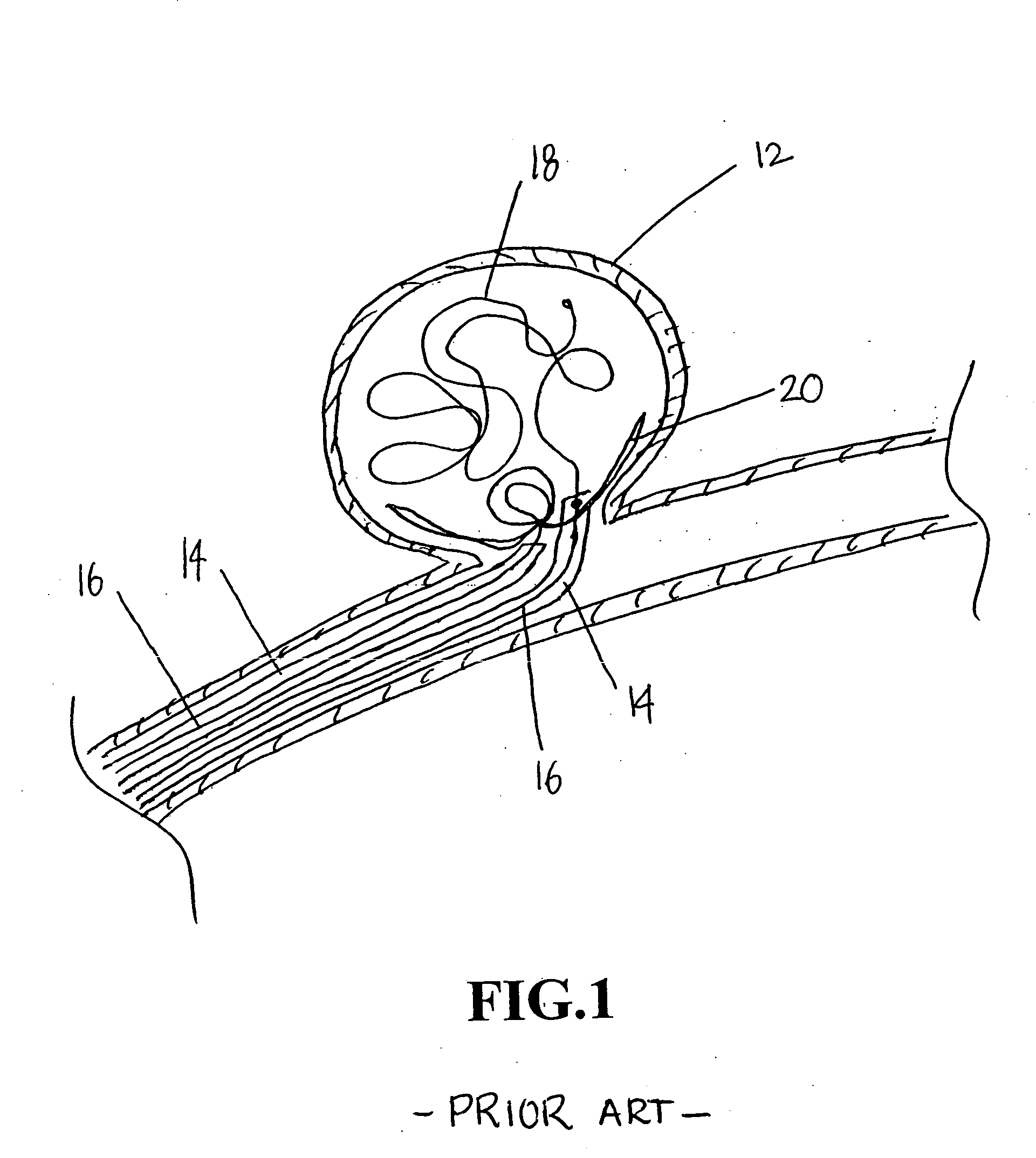Methods and devices for endothelial denudation to prevent recanalization after embolization
a technology of endothelial denudation and endovascular treatment, which is applied in the field of endovascular treatment of vascular diseases, can solve the problems of unruptured aneurysms, affecting the treatment effect, so as to prevent recanalization and effectively denudation the intima
- Summary
- Abstract
- Description
- Claims
- Application Information
AI Technical Summary
Benefits of technology
Problems solved by technology
Method used
Image
Examples
experiment a
[0040] It has been previously shown in animal models that coil embolization is routinely followed by recanalization.
[0041] Experiments were performed using the single coil arterial occlusion model (described in Raymond et al., “In Situ beta radiation to prevent recanalization after coil embolization of cerebral aneurysm”, Stroke, February 2002, pp. 421-427), but preceded by endothelial denudation performed by a transcatheter technique using the preferred embodiment of the denudation device 10 shown in FIG. 2. Typically 5 passes with rotations were performed in each arterial segment. The group of arteries studied included 16 arteries that were denuded with the denudation device 10 and coiled, 6 arteries that were coiled without de-endothelialization, and 6 arteries that were denuded with the denudation device 10 but not coiled. Six (6) control arteries were also studied for comparison. Follow-up angiography was performed immediately after embolization, at 1 hour, 4 and 12 weeks, imm...
experiment b
[0043] The goal of that experiment was to study the effects of mechanically disrupting the endothelial layer with an endovascular device immediately before coil deposition, first in canine arteries, then in bifurcation aneurysms, in an effort to prevent recanalization and recurrences after coil embolization.
Material and Methods
[0044] Animal Models
[0045] Protocols were approved by the Institutional Animal Care Committee in accordance with guidelines of the Canadian Council of Animal Care. All procedures were performed under general anesthesia. Twenty-seven beagles weighing 10 to 15 kg were sedated with acepromazine (0.1 mg / kg), glycopyrrolate (0.01 mg / kg), and butorphanol (0.1 mg / kg), and anesthetized with intravenous thiopental (15 mg / kg). Animals were ventilated artificially and maintained under anesthesia with 2% isoflurane. Postoperative analgesia was provided for 3 days by a 50-μg Fentanyl skin patch.
[0046] Arterial Occlusion Model
[0047] The arterial occlusion model has pr...
PUM
 Login to View More
Login to View More Abstract
Description
Claims
Application Information
 Login to View More
Login to View More - R&D
- Intellectual Property
- Life Sciences
- Materials
- Tech Scout
- Unparalleled Data Quality
- Higher Quality Content
- 60% Fewer Hallucinations
Browse by: Latest US Patents, China's latest patents, Technical Efficacy Thesaurus, Application Domain, Technology Topic, Popular Technical Reports.
© 2025 PatSnap. All rights reserved.Legal|Privacy policy|Modern Slavery Act Transparency Statement|Sitemap|About US| Contact US: help@patsnap.com



